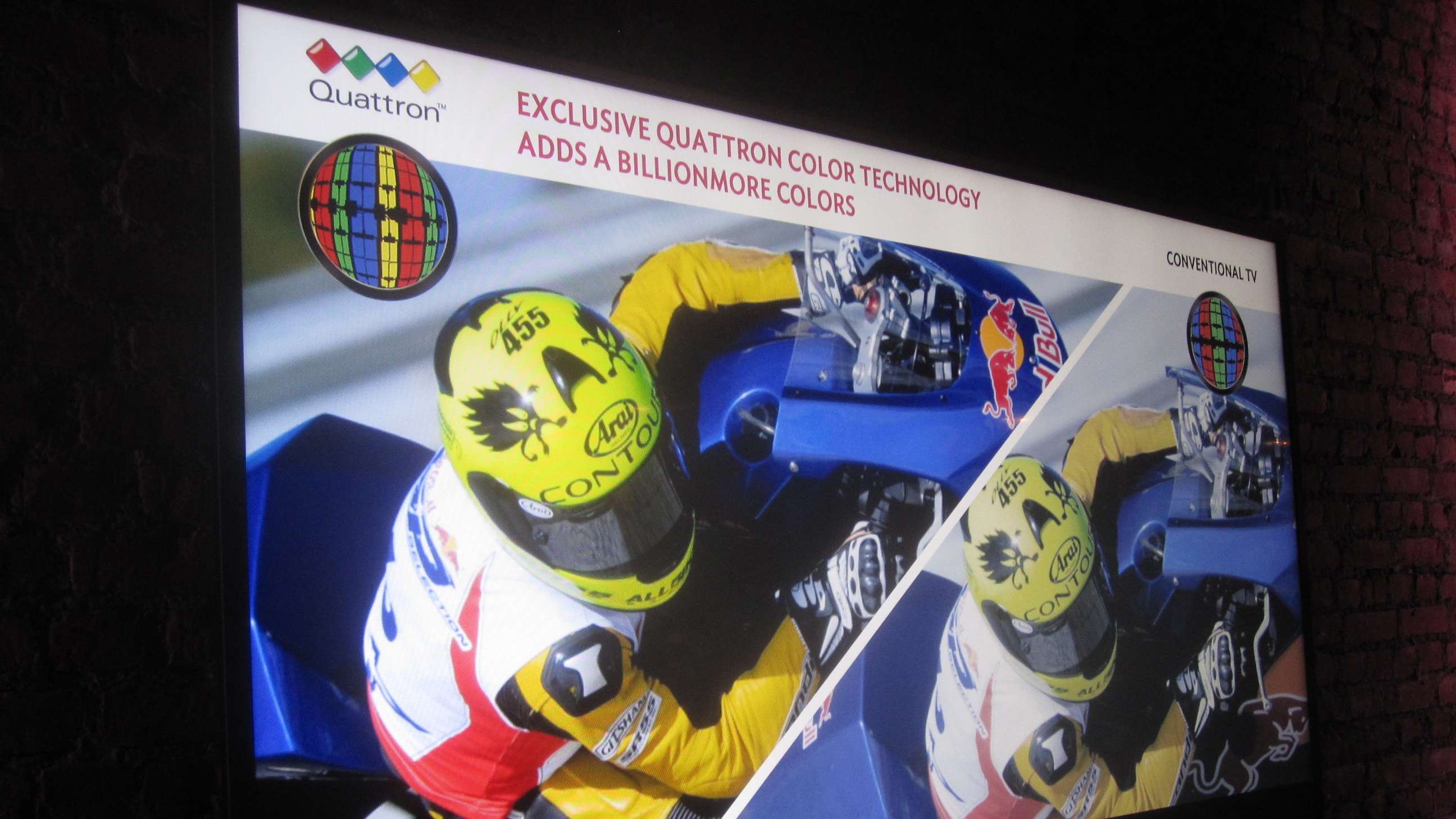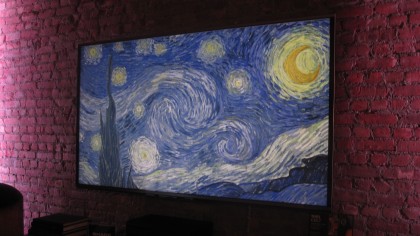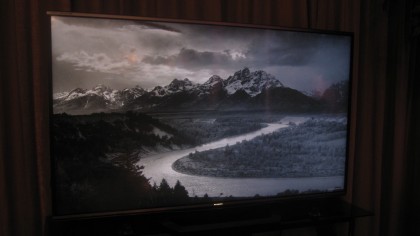Sharp's Quattron Tech adds 'a billion more colors'
Sharp's 8 Series LED Smart TV makes the rainbow brighter

On June 4, Sharp invited members of the New York City press to take a closer look at their recently released flagship from the 2013 Aquos line up, sporting the latest iteration of their Quattron technology.
The set made its debut earlier this year in Las Vegas, at CES 2013, but was somewhat lost in the shuffle. Hence the point of the event - to give their 8 Series LED Smart TV a little more of the spotlight, Sharp explained.
The set itself sports a nice, attractive design that's simply stated, though the 80-inch display, or more specifically the technology behind it, was the star of the show.
For those not familiar, Quattron adds a fourth sub-pixel to the mix.
Roy G. Biv
Virtually every display relies on the RGB color space (red, green, and blue) to create all the colors in an image. Taking what they learned when adding color to copiers, Sharp figured that if they introduced yellow to pre-existing red/green/blue sub-pixels it would produce a more vivid range of colors.
To demonstrate the difference, two sets were displayed side by side - an 8 Series and an older Aquos model. The yellows definitely looked more distinct, as did several other hues. In fact, the pinks looked positively pink on the 8 Series television, whereas the other model showed the pinks as more purple-y.
Sharp claims the addition of the yellow sub-pixel enhances the images creating near 4K quality display. The 8 Series is still classified as 1080p monitors but Sharp's goal is to provide as close to a 4K image as possible while remaining in the 1080p price range.
Get daily insight, inspiration and deals in your inbox
Sign up for breaking news, reviews, opinion, top tech deals, and more.

The science behind it all appeared sound, but it was hard to say if the image was all that superior when compared to the competition without a proper side by side. Additionally, Sharp was unable to set the curtains aside in the demo room, to see how well the image stood out against direct sunlight.
Energy saving, and bright as ever
Another added bonus of Sharp's Quattron tech is less energy usage. Normally, a considerable amount of power is used by the display to produce the color yellow, and similar hues, from mixing red, green, and blue. But that's no longer necessary here.
Furthermore, the overall image is brighter, and the 8 Series will not have to fight with a room that has strong lighting.
It was mentioned multiple times that Sharp consistently meets the rather stringent Energy Saver standards (version 6.1).
Representatives also bragged about Hollywood producer Joel Silver, who supposedly swears by his Aquos set - mostly because he has a pool right next to his entertainment center - which reflects loads of sunlight directly onto his TV.
Rainbow hued software
Sharp pointed out that their Quattron technology is not new - they've been employing it in various sets since 2009 - though they have big plans for the near future, primarily for smaller displays, such as smart phones and tablets. But they astutely mentioned that both platforms currently enjoy superb image quality as is, despite paying the heavy price of battery drain.
It was noted that Quattron is primarily a software-based solution with the next iteration making an appearance in their next line of Aqous sets, due at the end of this year or early 2014.

When asked if the current Series sets could be upgraded via software updates, Sharp stated they're exploring that possibility, but couldn't give a firm yes or no.
TechRadar asked if Sharp's gargantuan 90-inch display will also benefit from Quattron technology, and was told that it was technically unfeasible at the moment.
Beyond the pretty colors
The 8 Series is filled with all sorts of other bells and whistles. Wallpaper mode, which displays an image while the set is off, provides a nice and bright image despite having very little juice running through its circuits - the equivalent of a 30 watt bulb.
Another highlighted feature was AquoMotion 960, Sharp's 240Hz refresh rate standard, but without the "soap opera look" that all serious video aficionados hate so much. In this case, a side by side was not necessary, since the aforementioned look is hard to forget. Moving images did look nice and natural.
Sharp reps also explained there is absolutely no lag when playing games with AquoMotion 960 activated. In previous sets, when Game Mode was activated, all motion processing stopped. But with AquoMotion 960, it remains on. Quite the intriguing claim, as no Xbox 360 or PS3 was hooked up to verify this.
Sharp also showed off various built in apps covering the most popular streaming portals, such as Netflix, Hulu Plus and Pandora, all tied together neatly with a Flash supported web browser. Users can even split the screen in half allowing television watching or game playing on one side, with web surfing on the other.
Sorry Windows Phone and Blackberry users, but you're out of luck at the moment as only iPhone and Android apps can act as a remote.
The pot 'o gold
Overall, first impressions of the Series 8 set are positive, though a bit more side-by-side comparisons are probably needed to see if the image quality is truly superior to the competition, and how well it actually stands up against a 4K display.
But at the very least, those yellows did look very nice and yellow.
The flagship 8 Series display, otherwise known as LC-80LE857U, will cost you $6499.99 (£4187.60, AUD6880.50) and is available now.
- More news on the Sharp Aquos series and that 90-inch LED beast